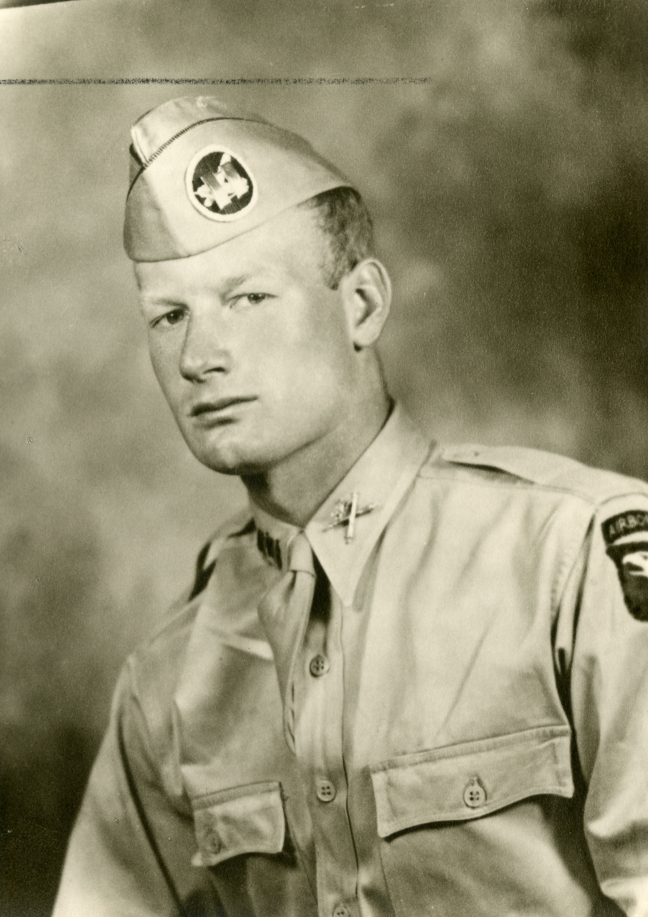AMES, Iowa — Capt. John M. “Jack” Fuller fought in two historic World War II battles: D-Day and the Battle of the Bulge.
Fuller was born Aug. 19, 1919, in Milford. When he was 12 years old, he joined the Boy Scouts, achieving the rank of Life Scout. He left the Scouts after three years before achieving his dream of obtaining the coveted rank of Eagle Scout.
In 1938, Fuller came to Iowa State University to major in general engineering. Here, he joined the Delta Upsilon Fraternity, he was a member of the band and he was the leading editor of Iowa State’s yearbook, “The Bomb.”
He graduated in 1941 and took a job with Aluminum Company of America in Cleveland. Just as his life in Cleveland was beginning, Japan attacked Pearl Harbor that December. Fuller enlisted in the U.S. Army Air Corps on Jan. 15, 1942, and spent the next year training at Fort Bragg, North Carolina.
By 1943, the Allies had scored key victories against the Axis Powers in Europe. The Soviet Union defeated Germany at the Battle of Stalingrad in February. By May, all of northern Africa was liberated.
Deployed to England
In May 1943, Fuller was promoted to captain. In August, he was deployed to England as a member of the 2nd Battalion, 321st Field Artillery Regiment, 82nd Airborne Division — known as the “Screaming Eagle Battalion.”
Italy surrendered in September 1943. However, the Germans were still fighting a one-front war in Europe.
In 1944, Fuller found himself fighting German forces in France, aiming to open up a second front. In the early morning hours of June 6, 1944 — D-Day — the 82nd and 101st Airborne Divisions flew toward France. Their goal was for 6,600 paratroopers to land behind enemy lines to establish a beachhead from which they would capture Cherbourg, France, in preparation for an amphibious assault to follow near dawn.
Anti-aircraft artillery was intense, forcing flight formations from their original paths. This turn of events resulted in dispersed drops that forced mixed bands of troops to try to continue the mission. Despite this setback, the Screaming Eagles took Cherbourg, playing a crucial role in the success of 160,000 Allied troops that landed along a 50-mile stretch of heavily-fortified French coastline that day.
The 82nd Airborne Division continued its mission in the Allied advance in Western Europe. On Sept. 17, 1944, they participated in a daylight jump into Holland that secured a vital supply route for the British Second Army. By December 1944, the German Army appeared near defeat. News stories about the war began focusing on the aftermath. The general mood was that an Allied victory was near.
That changed on Dec. 18, 1944.
The Battle of the Bulge
Germany launched a counteroffensive against Allied forces in Western Europe, trying to drive a wedge in the Allied line. American and British forces started retreating, and once again Fuller’s division was asked to help stop the enemy’s advance.
Eight German divisions surrounded the Screaming Eagles during the Battle of the Bulge. They were bombarded with artillery. Supplies ran so low for American troops that they were limited to 10 rounds a day. Still, the 101st and 82nd Airborne Divisions stalled Germany’s attack.
On Dec. 23, 1944, six days into the counteroffensive, Fuller was killed near Bastogne, Belgium. He was temporarily buried in Europe, but his body was returned to a permanent resting place in Fairview Cemetery in Cedar Falls on Feb. 5, 1949.
Fuller became the first American to be posthumously awarded the rank of Eagle Scout by the Boy Scouts. In January 1945, he received the honor he had set his sights on as a child.



